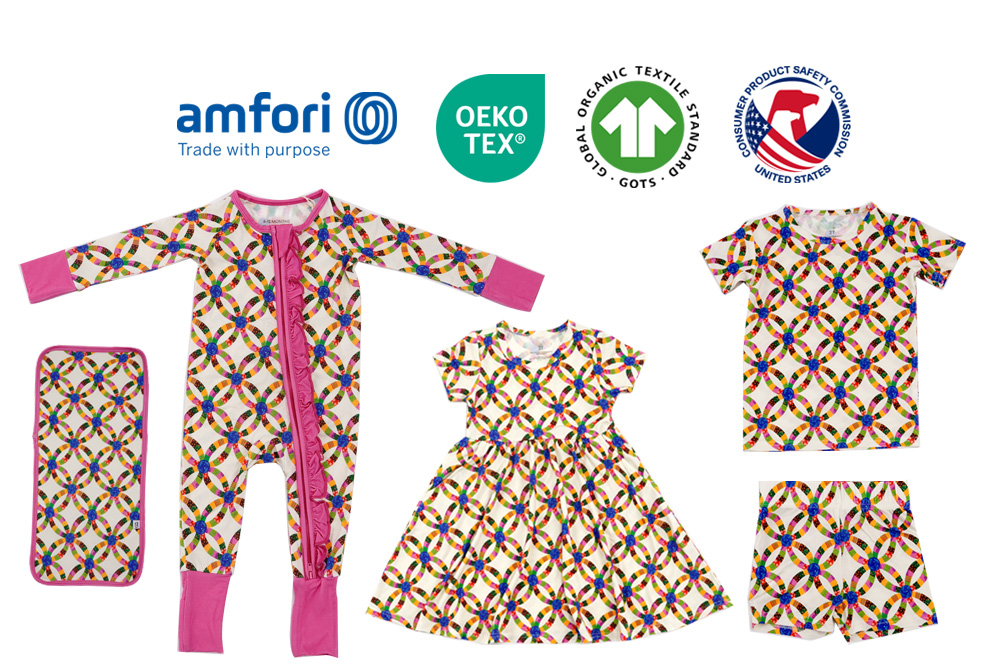
In the competitive landscape of baby clothing retail, selecting the right organic baby clothing manufacturer can be a game-changer. Retailers often face a labyrinth of considerations when evaluating potential suppliers, with cost being a critical component.
This article delves into the intricate factors influencing pricing structures in custom baby clothing orders, offering valuable insights on negotiating costs and understanding payment terms with manufacturers.
Understanding the Pricing Structure in Custom Baby Clothing Manufacturing
Material Costs: The Foundation of Pricing
Material costs form the bedrock of any custom baby clothing manufacturing process. When working with organic and eco-friendly fabrics like bamboo and organic cotton, the cost can vary significantly based on the quality and source of the materials. GOTS-certified fabrics or OEKO-TEX® certified baby clothing materials often command a higher price due to their rigorous certification processes, which guarantee environmental and safety standards.
Sustainable materials not only appeal to the growing demand for eco-friendly products but also add to the overall cost. Retailers must balance their commitment to sustainability with the price point that their market can bear. In some cases, manufacturers may offer cost-saving alternatives without compromising on quality, such as blends of bamboo and spandex, which provide durability and comfort at a lower cost.
Customization Complexity: Design and Branding Costs
The degree of customization requested by a retailer significantly impacts the final cost. Custom designs, logos, and labels require additional resources in terms of design, production time, and materials. For instance, a custom Christmas red square pyjama made from bamboo and spandex jersey with digital printing and specific size charts may incur higher costs due to the complexity of the design and the use of specialized printing techniques.
Retailers must also consider the Minimum Order Quantity (MOQ) when negotiating costs. Manufacturers often set a lower MOQ for simple designs, while intricate, highly customized orders may require a higher MOQ to justify the setup costs. Negotiating a balance between the desired level of customization and MOQ can lead to more favorable pricing terms.
Labor Costs: A Key Component in Pricing
Labor costs are a significant factor in determining the price of custom baby clothing. In regions where labor costs are higher, such as in countries with stringent labor laws and higher wages, the price of manufacturing will naturally increase. However, this often correlates with better working conditions and higher quality products, which can be a selling point for eco-conscious retailers.
Manufacturers may offer tiered pricing based on the complexity of the work involved. For example, a bamboo ruffle baby romper with a butterfly print, featuring ruffle zippers and foldable hands and feet, would require more labor-intensive processes than a simple bodysuit. Understanding these labor cost implications is crucial when negotiating with manufacturers.
Shipping and Logistics: The Hidden Costs
Shipping and logistics are often overlooked but can significantly impact the overall cost of custom baby clothing. International shipping, customs duties, and import taxes can add to the final price. Retailers should factor in these costs when comparing manufacturers from different regions. Additionally, the choice of shipping method—whether by sea, air, or land—can influence both the cost and the delivery time, which are critical considerations for meeting seasonal demand.
Volume Discounts: Negotiating Cost-Effective Solutions
One of the most effective ways to reduce costs in custom baby clothing manufacturing is by negotiating volume discounts. Manufacturers are often willing to offer lower prices per unit when retailers place larger orders. This can be particularly advantageous for products with a steady demand, such as classic baby bodysuits or popular designs like the custom bamboo ruffle baby romper.
Retailers should discuss potential discounts for bulk orders upfront and consider the long-term relationship with the manufacturer. Building a strong partnership can lead to more favorable terms over time, including reduced costs for new product lines or repeat orders.
Payment Terms: Flexibility and Financing Options
Understanding and negotiating payment terms is crucial in managing cash flow and overall costs. Manufacturers may offer various payment terms, such as a percentage of the payment upfront and the balance upon delivery. Retailers should seek flexibility in these terms, especially when placing large orders.
Some manufacturers might offer financing options or discounts for early payments, which can be beneficial for retailers with tight budgets. It's essential to clarify payment terms during the negotiation process to avoid any misunderstandings that could lead to delays or additional costs.
Guidelines for Cost Negotiation with Baby Clothing Manufacturers
Research and Preparation
Before entering negotiations, retailers should conduct thorough research on potential manufacturers, including their pricing structures, production capabilities, and past customer reviews. Understanding the market rates and the specific cost drivers for the desired product is crucial for a successful negotiation.
Leverage Relationships
Building strong relationships with manufacturers can provide leverage in negotiations. A long-term partnership may lead to better pricing, flexible payment terms, and priority in production schedules. Retailers should aim to foster a collaborative relationship that benefits both parties.
Flexibility in Orders
Retailers who can offer flexibility in order quantities, delivery schedules, or customization requirements may find it easier to negotiate favorable terms. Manufacturers appreciate clients who are willing to adapt to their production cycles and capabilities, which can lead to cost savings.
Transparency and Communication
Clear and open communication is vital during cost negotiations. Retailers should be transparent about their budget constraints and expectations while being open to the manufacturer's suggestions for cost-saving measures. This approach fosters mutual trust and can lead to more successful negotiations.
Conclusion
Cost considerations in custom baby clothing manufacturing are multifaceted, involving a careful balance between material quality, customization complexity, labor costs, and logistics. Retailers must approach these negotiations with a clear understanding of the factors at play and a strategy to secure the best possible terms. By focusing on building strong relationships, being flexible, and maintaining open communication, retailers can achieve cost-effective solutions that align with their brand values and market demands.